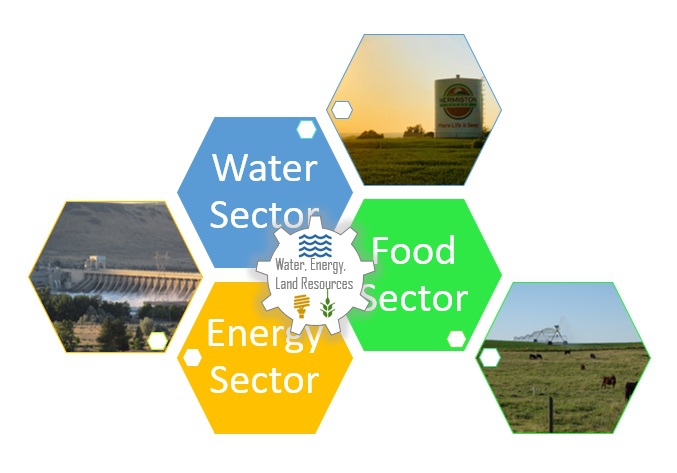What is FEW Nexus?
FEW nexus, by definition, refers to the connections between the food (F) sector, the energy (E) sector, and the water (W) sector that create interdependencies between these sectors. Take for example, the food sector. Production of crops, animal husbandry, food processing, transporting food, etc. all require intensive use and management of water, energy, and land. For example, globally, agriculture is responsible for 70% of water withdrawals (FAO), and 30% of total energy produced in this world is used for food production and supply-chain (UNESCO, 2012). However, with threats to water supplies because of changes such as climate change, rising urban demands, and decreasing storage in surface and ground water systems, the food sector is consequently vulnerable to these threats. At the same time, a growing food sector has increasing energy demands, thereby putting additional stresses on how and how much the energy sector is expected to generate cost-effective energy. However, the energy sector is itself a huge consumer of water (90% of power produced in this world is water-intensive (UNESCO, 2014)), and as a result a growing energy sector adds even more stress on water supplies, which the food sector heavily depends on. Hence, increase in energy demand by the food sector comes with a tradeoff in increase in water use by energy sector and less water available for the food sector. Managing these interdependencies and tradeoffs is immensely critical, in order to ensure that these sectors can evolve in a sustainable manner and effectively respond to threats.
“Click on the video “Collaborative Adaptation” on the right to learn about the FEW nexus in the Umatilla River Basin, and the complexities of managing the nexus of food, energy, and water sectors in local communities in a changing and uncertain world.”
